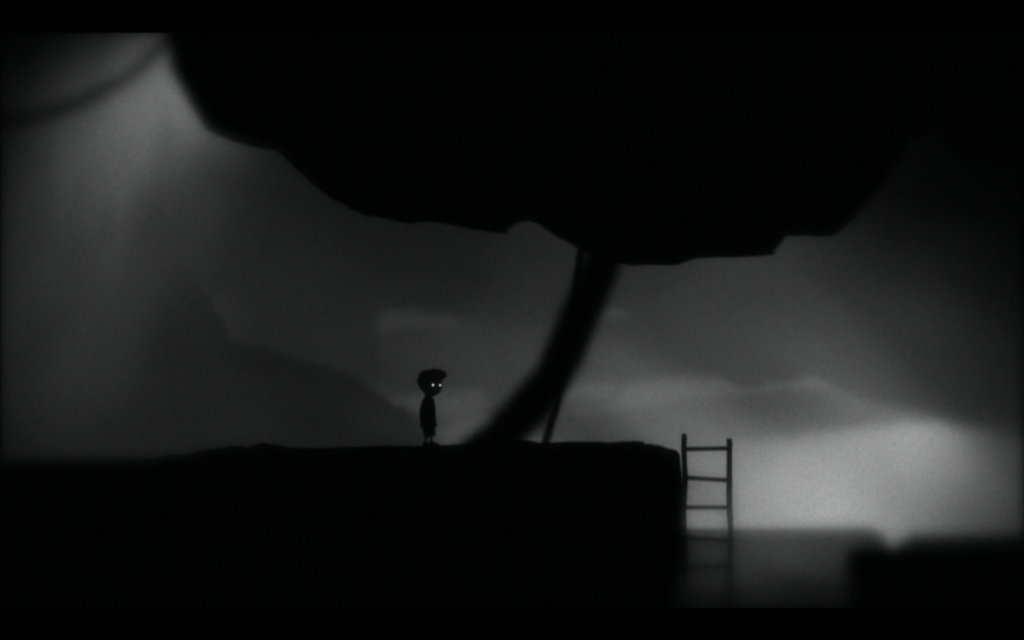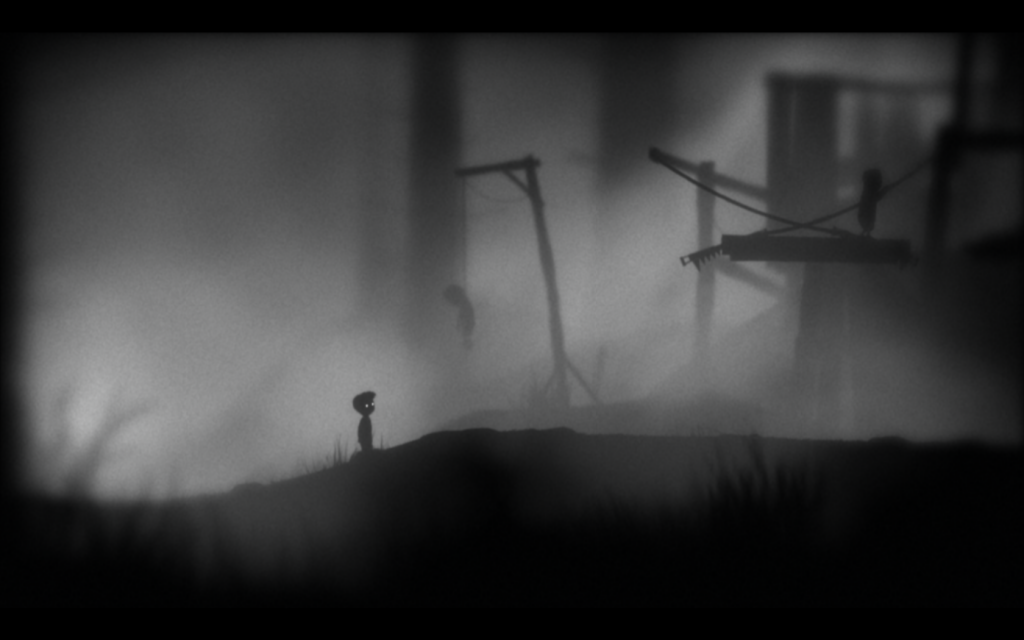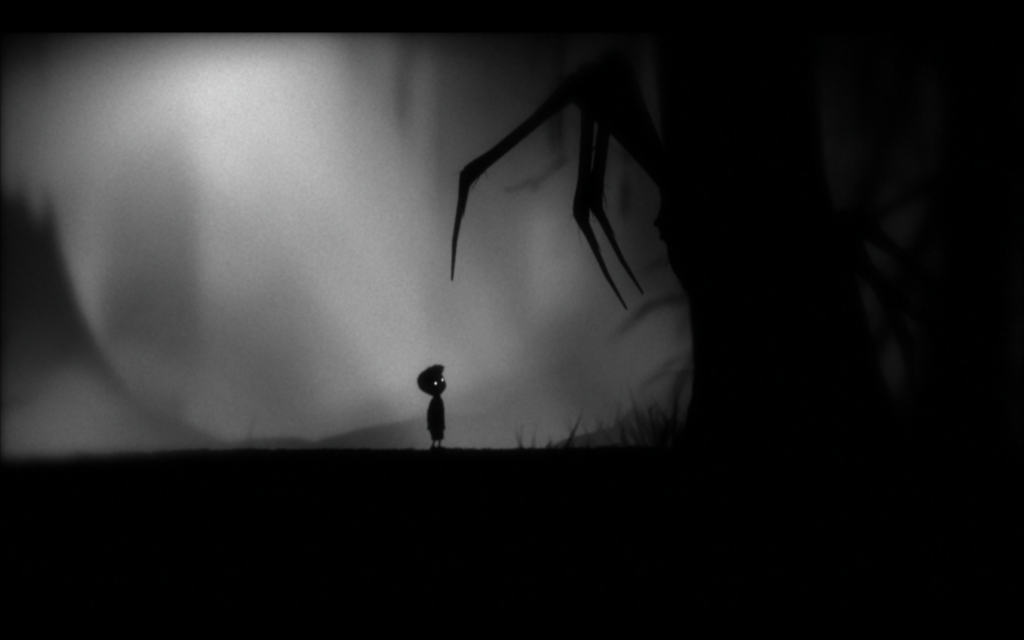Narrative in a platform game? Maybe not in the sense of a coherent and complete narrative experience. Yet, there is something in Arnt Jensen’s Limbo – a highly stylized, evocative atmosphere, that simultaneously elevates the game well above the average in the platformer space and raises awareness for the potential of atmosphere as part of a narrative strategy in interactive and game narrative.
Presented entirely in shades between white and back, the game takes visual clues from black and white silent movies and animations but transforms this aesthetic for digital media into a representation with a limited palette of shades reminiscent of cut-outs that includes visual effects like transparent water and fire, as well as a reduced but efficient sound design.
The results are striking – dark, foreboding forest and industrial vistas in which the interactor’s avatar stands out with its bright white eyes. Limbo shares the evocative atmosphere with Amnesia – the Dark Descent, but combines it with fairly traditional gameplay and side-scrolling presentation that gives the interactor only two directions – left or right. The result is a game that does not need much explanation to play, and lets the interactor concentrate on experiencing the dark and menacing atmosphere as much (if not more) as the jumping, pushing and running gameplay itself. This “pure” experience is also achieved through another conscious reduction – not only is the space of the game limited, there is also no text during game play.
Many of the game’s vistas contain evil creatures that are initially hidden and startle you – if not outright scare you – when the interactor’s diminutive avatar approaches them. You wait for them to appear, you are prepared to flee and devise a strategy for survival. And yet, you want to see them because the moment the giant spider starts moving is also a dramatic narrative moment, one that evokes childhood fears and fairy tales, or the grown-ups uneasiness around the 8-legged creatures. Similar experiences are scattered throughout the game for example when the interactor’s avatar encounters ghostly enemies that wait, attack and vanish. It is in such moments that the combination of visual and interactive design becomes a strategy that shows its narrative potential.
For the practitioner working in interactive narrative the challenge is to create narrative strategies that take advantage of digital media’s affordances such as procedurality and participation and phenomenological qualities such as agency. For the researcher in interactive and game narrative the task is to identify such strategies, and categorize them.
From this perspective, Limbo represents an important step along the way. The game’s development team has realized a vision that not only goes against the trend of ever more realistic depictions in computer games, but also manages to apply these aesthetics for narrative effect. This is no small feat.
More reading




